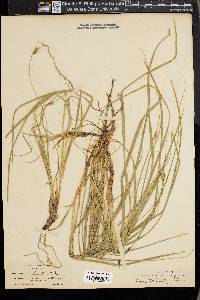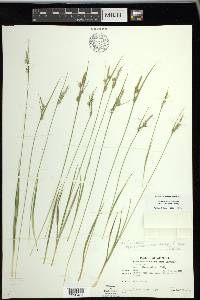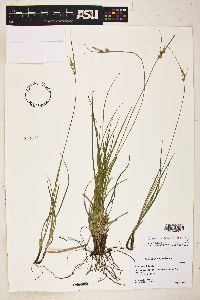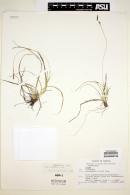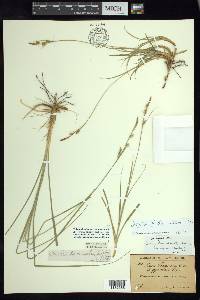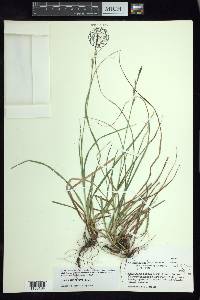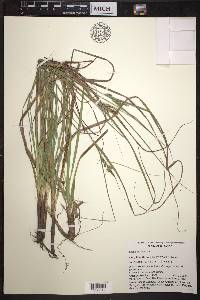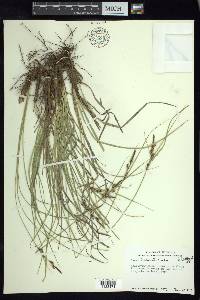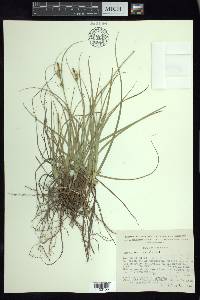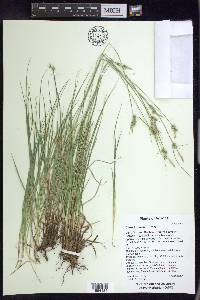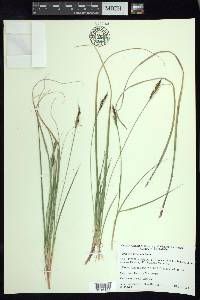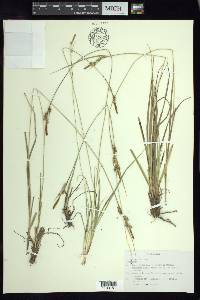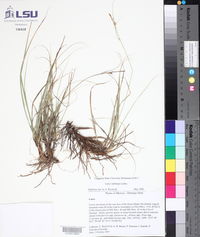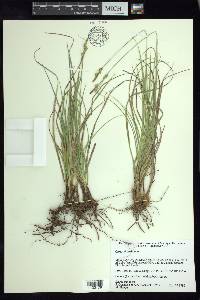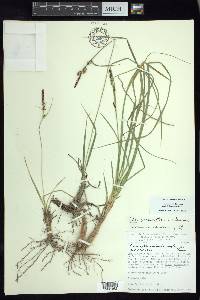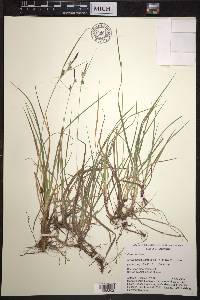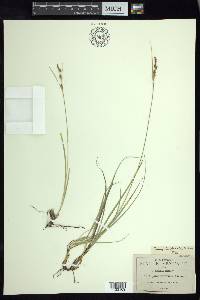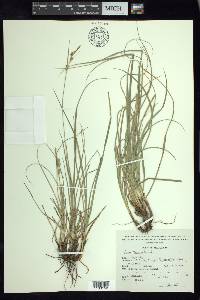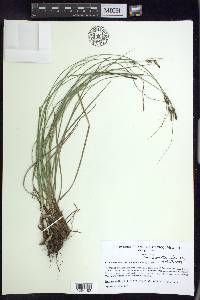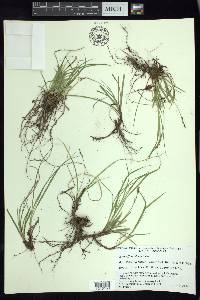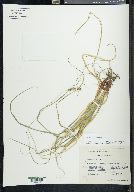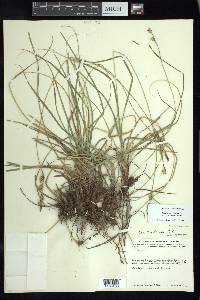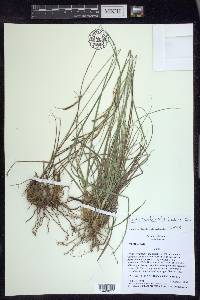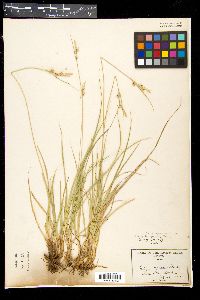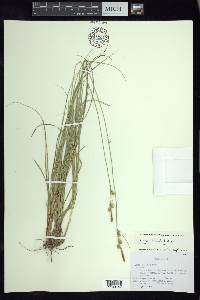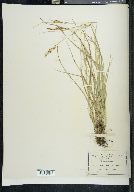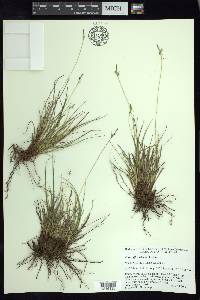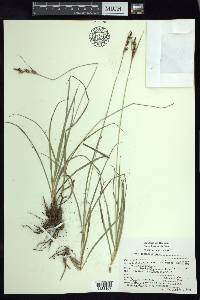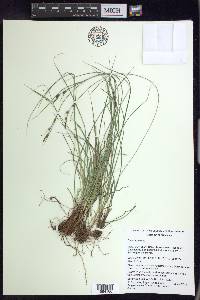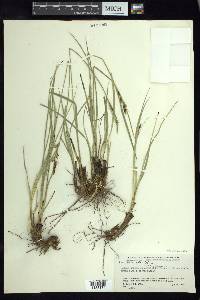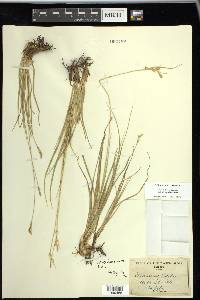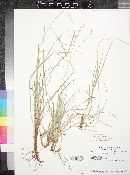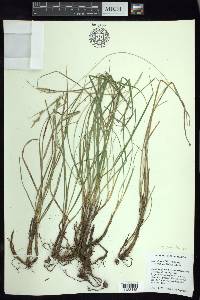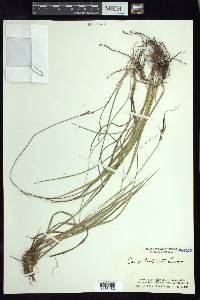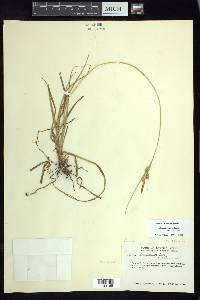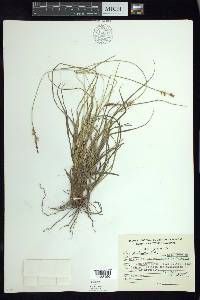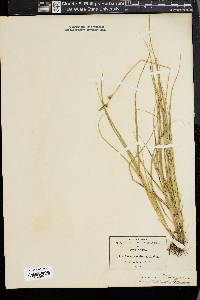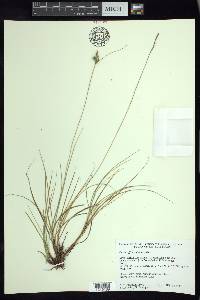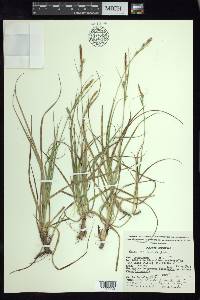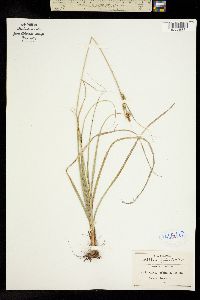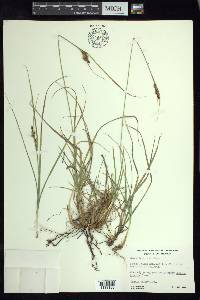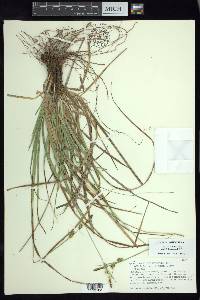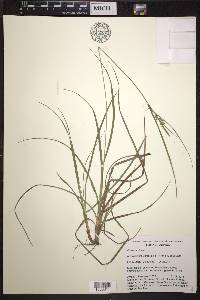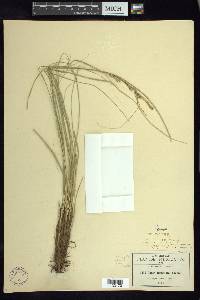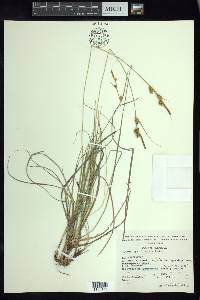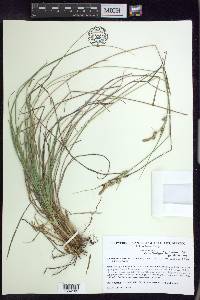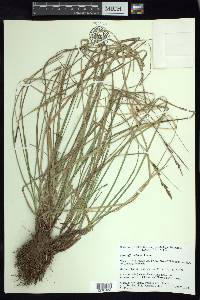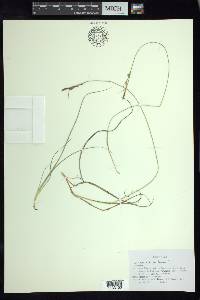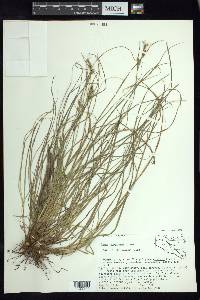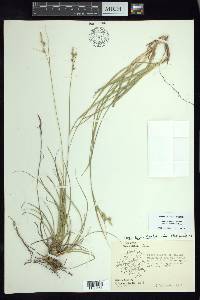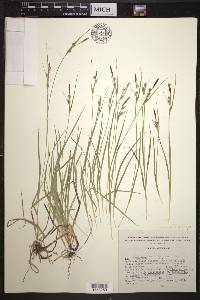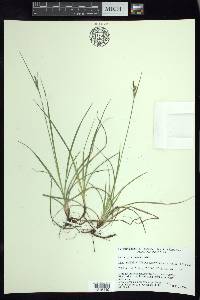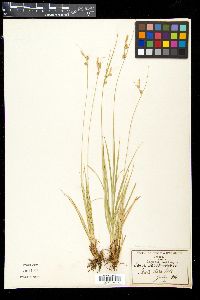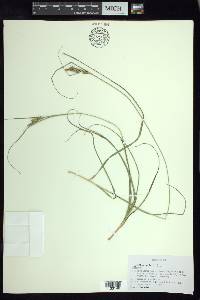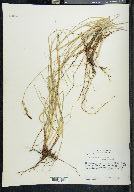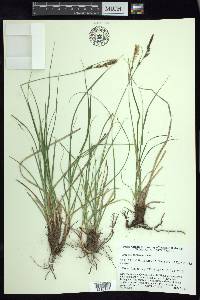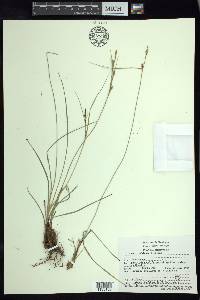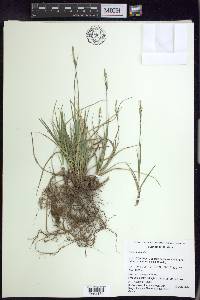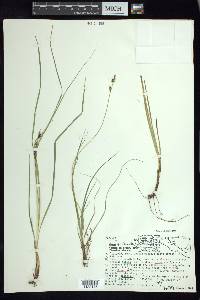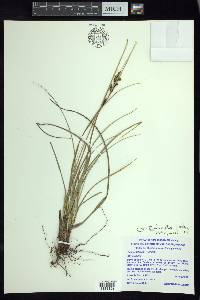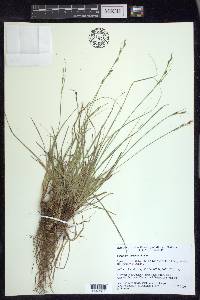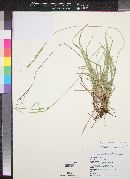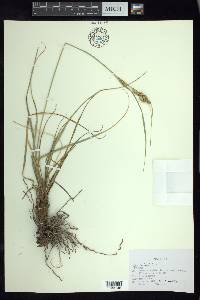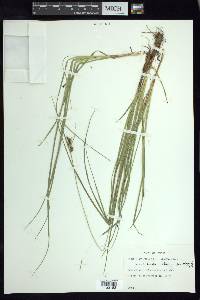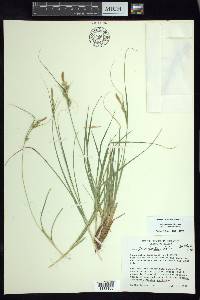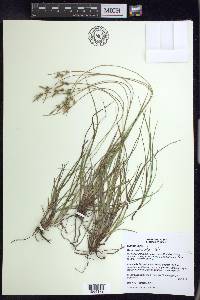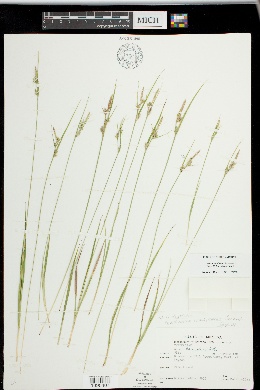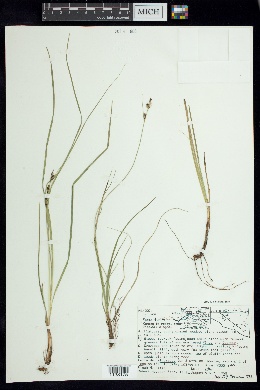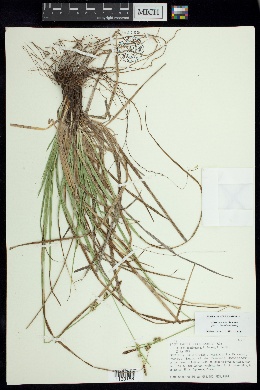
|
|
|
|
Family: Cyperaceae
Huachuca Mountain sedge, more...White sedge
|
Plants loosely cespitose or with solitary stems; rhizomes ascending, brown, 0-5 mm, stout or absent. Culms 21-47 cm, scabrous distally; bases (remnants of old leaves) fibrous. Leaf blades green, shorter than culms, 2-3.5 mm wide, herbaceous to coriaceous, papillose to scabrous abaxially, papillose to slightly scabrous adaxially. Inflorescences with both staminate and pistillate spikes; peduncles of staminate spikes 1.1-10 mm; proximal nonbasal bracts leaflike, equaling or exceeding inflorescences. Spikes: proximal pistillate spikes 2-5 (basal spikes 0); cauline spikes with the proximal separated, with 4-10 perigynia; staminate spikes (5.3-) 9.6-26.2 × (1-)1.4-3.4 mm. Scales: pistillate scales whitish or pale brown to dark reddish brown, with narrow to broad white margins, ovate to lanceolate, 4.2-4.5 × 1.7-2.5 mm, equaling perigynia, apex acuminate or short-awned; staminate scales ovate to obovate, 6-6.2 × 1.6-2 mm, apex obtuse or acute to acuminate or short-awned. Anthers 2.2-3.3 mm. Perigynia pale green to yellow or pale brown, 10-25-veined to at least mid body, obovoid to globose, 3.1-4.2 × 1.5-2.4 mm, as long as wide; beak straight, pale green to pale brown, 0.4-1.1 mm, smooth, apical teeth 0.1-0.4 mm. Stigmas 3. Achenes brown, globose, round in cross section, 1.6-2.6 × 1.5-2.4 mm. Fruiting mid Jul-mid Aug. Open pine forests, mountain slopes, oak-fir forests, moist stream banks, steep ravines; 600-3300 m; Ariz.; Mexico. The two extremes in the morphologic variation in Carex turbinata are quite distinctive and may be correlated with latitude and elevation. An examination of specimens from across its range shows a continuum of variation in reproductive and vegetative characters.
FNA 2002 Common Name: Huachuca Mountain sedge Duration: Perennial Nativity: Native Lifeform: Graminoid General: Loosely tufted or with solitary stems, rhizomes ascending, brown, 0-5 mm, with stems 20-50 cm, scabrous near tips, bases fibrous. Vegetative: Leaf blades green, shorter than stems, 2-3.5 mm wide, herbaceous to leathery, papillose to scabrous on both surfaces, less so on upper. Inflorescence: Bearing both pistillate and staminate spikes, lower bracts leaflike, equaling or exceeding the inflorescences, pistillate spikes 2-5, cauline spikes with the basal ones separated with 4-10 perigynia, staminate spikes 10-26 mm long by 1.5-3.5 mm wide; pistillate scales white to pale reddish brown, with narrow to broad white margins, ovate to lanceolate, 4-4.5 mm by 1.5-2.5 mm, equaling perigynia, apex acuminate to short awned; perigynia pale green to yellow or pale brown, 10-25 veined, obovoid to globose, 3-4 mm by 1.5-2.5 mm, as long as wide, straight beak, pale green to pale brown, 0.4-1.1 mm, smooth with minute apical teeth; achenes brown, globose, round in cross section. Ecology: Found in open woodlands and forests, along moist stream banks and in steep canyons from 2,000-11,000 ft (610-3353 m); flowers July-August. Notes: FNA refers to this species as C. turbinata, an assessment found nowhere else in the literature. The interrupted and sparse appearance of this species helps to distinguish it. This species is restricted to southern and central Arizona in the United States, and is most closely related to Carex geophila. Both share hairy perigynia. However, the inflorescences of Carex leucodonta rise far above the leaves, unlike those of C. geophila, and it does not produce basal spikes. The lateral pistillate spikes are very short, and when filled with mature globose perigynia, they contrast with the terminal staminate spike creating a distinctive appearance to the inflorescence. FNA combines this taxon with Carex turbinata Leibm., under the latter name. Ethnobotany: Unknown Etymology: Carex is the classical Latin name for the genus, while leucodonta comes from Greek leukos for white, while donta refers to teeth. Synonyms: Carex leucodonta Editor: SBuckley, 2010 |
This project was made possible in part by the Institute of Museum and Library Services [MG-70-19-0057-19].
Powered by Symbiota



